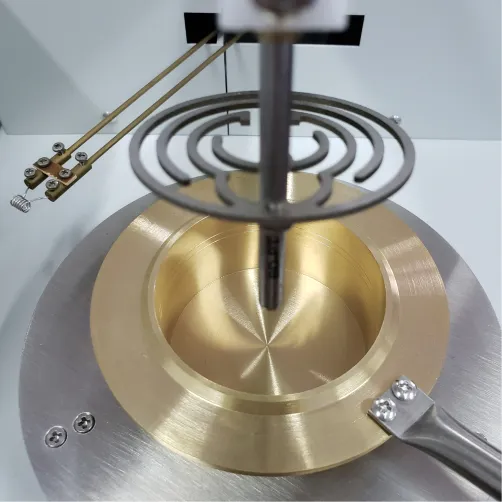 English
English


precipitation potentiometric titration
Understanding Precipitation Potentiometric Titration An Insight into Analytical Chemistry
Precipitation potentiometric titration is a sophisticated analytical technique widely employed in chemistry to determine the concentration of specific ions in solution. By exploiting the principles of electrochemistry and precipitation reactions, this method provides a reliable means for quantifying substances, making it invaluable in various fields such as environmental monitoring, food safety, and pharmaceuticals.
Principles of Precipitation Potentiometric Titration
The core principle behind precipitation potentiometric titration involves the formation of an insoluble precipitate during a titration process. When a titrant is added to a solution containing a specific analyte, a reaction occurs, leading to the formation of a precipitate. This solid phase is formed by the reaction between the analyte and the titrant, and the end point of the titration can be determined by monitoring the change in potential (voltage) of the electrochemical cell.
The electrochemical cell in this setup typically comprises a reference electrode and an indicator electrode. The reference electrode maintains a constant potential, while the indicator electrode responds to changes in the concentration of the ions in solution. When the titration reaches the equivalence point—the stage where stoichiometric amounts of the reactants have reacted—there is a significant change in potential, allowing for precise determination of the endpoint.
Procedure of Precipitation Potentiometric Titration
Performing a precipitation potentiometric titration involves several critical steps. First, a known concentration of titrant is prepared, alongside the sample solution containing the analyte of interest. The reaction chosen for this titration often includes the formation of a sparingly soluble salt, such as barium sulfate or silver chloride.
1. Preparation of Solutions Prepare the titrant and sample solutions. It is essential to choose appropriate concentrations to ensure accurate results.
2. Setup of Electrochemical Cell Connect the reference and indicator electrodes to an appropriate potentiometer or titrator equipped with a data recording system to track potential changes.
3. Titration Process Gradually add the titrant to the sample solution while continuously stirring. Record the potential after each increment of titrant added.
precipitation potentiometric titration

4. Determining the Endpoint Monitor the curve of potential against the volume of titrant added. The inflection point in the curve indicates the endpoint of the titration.
Applications of Precipitation Potentiometric Titration
The applications of this technique extend to numerous areas. In environmental chemistry, for example, it is employed to determine ion concentrations in groundwater and surface water, aiding in evaluating pollution levels and water quality. In the food industry, it assesses the mineral content in various products, ensuring safety and compliance with health regulations.
Moreover, in the pharmaceutical sector, precipitation potentiometric titration aids in the quantification of active ingredients in drug formulations, thus playing a critical role in quality control and assurance.
Advantages and Limitations
Precipitation potentiometric titration boasts several advantages, including high sensitivity and specificity. The technique can detect low concentrations of analytes and is less prone to interference compared to other methods. Furthermore, it requires small sample volumes, making it suitable for limited samples.
However, it is not free of limitations. The formation of precipitates can sometimes lead to difficulties in endpoint detection, especially in cases of overlapping titration curves. Moreover, careful selection of titrants and thorough understanding of solubility rules are crucial to ensure precision in measurements.
Conclusion
In conclusion, precipitation potentiometric titration is a powerful analytical technique that provides valuable insights into the concentration of various ions in solution. Its precision, sensitivity, and versatility make it an essential tool in analytical chemistry. As the field of chemistry continues to evolve, the techniques and applications of potentiometric titration will undoubtedly expand, further enhancing our understanding of chemical interactions and the composition of materials in our world.
-
Differences between open cup flash point tester and closed cup flash point testerNewsOct.31,2024
-
The Reliable Load Tap ChangerNewsOct.23,2024
-
The Essential Guide to Hipot TestersNewsOct.23,2024
-
The Digital Insulation TesterNewsOct.23,2024
-
The Best Earth Loop Impedance Tester for SaleNewsOct.23,2024
-
Tan Delta Tester--The Essential Tool for Electrical Insulation TestingNewsOct.23,2024





